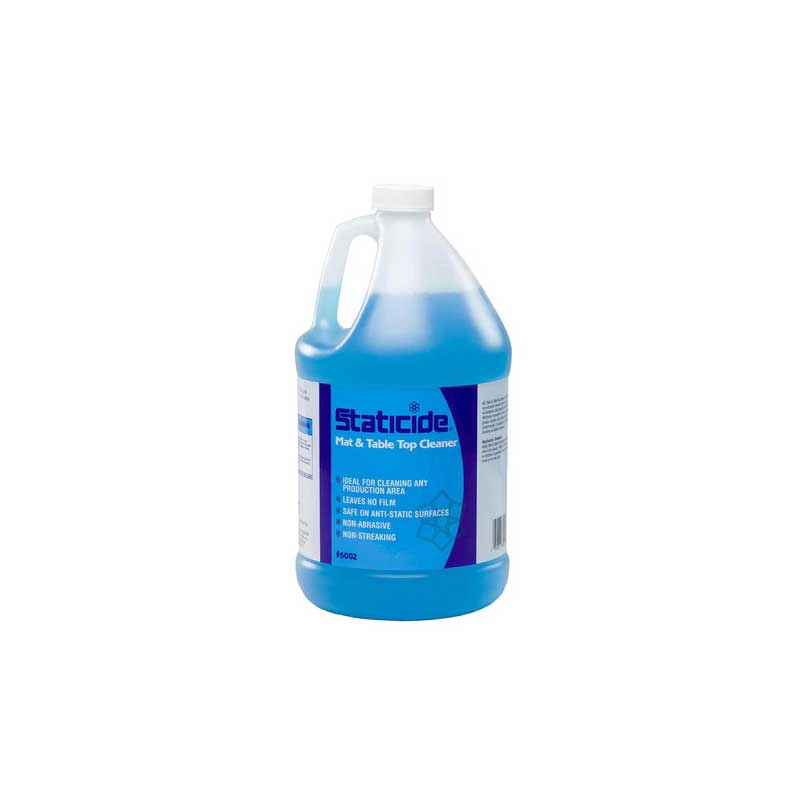
A Word About Benchtop Mat Reconditioning
A Static-Free Mat and Benchtop Reconditioner are tools used in environments where electrostatic discharge (ESD) control is critical, such as electronics manufacturing, laboratories, and cleanrooms. They help prevent damage to sensitive electronic components and devices by dissipating static charges and providing a controlled environment. Here's when and how these tools are typically used:
-
Static-Free Mat:
- Purpose: A static-free mat, also known as an ESD mat or anti-static mat, is designed to provide a conductive or dissipative surface that helps drain static charges from objects placed on it. It prevents the build-up of static electricity and helps protect sensitive electronic components from electrostatic discharge.
-
Usage Scenarios:
- Electronics Assembly: When assembling electronic devices or working on printed circuit boards (PCBs), a static-free mat can be used as a safe surface to place components, tools, and equipment. This prevents static charges from accumulating on the workbench and transferring to the components.
- Testing and Debugging: During testing and debugging of electronic circuits, a static-free mat provides a controlled environment to handle devices and equipment, reducing the risk of static damage.
- Component Storage: Static-free mats can also be used as storage surfaces for sensitive components, preventing static build-up while components are waiting to be used.
-
Benchtop Reconditioner:
- Purpose: A benchtop reconditioner, sometimes referred to as a surface reconditioner or mat cleaner, is used to clean and maintain the ESD properties of static-free mats and other ESD surfaces. Over time, ESD mats can accumulate contaminants that reduce their effectiveness in dissipating static charges.
-
Usage Scenarios:
- Regular Maintenance: The benchtop reconditioner is used for routine cleaning and maintenance of ESD mats to remove dirt, oils, and other contaminants that could affect the mat's performance.
- Restoration: If an ESD mat has become heavily soiled or its ESD properties have degraded, a benchtop reconditioner can be used to restore its effectiveness.
It's important to follow proper procedures when using a static-free mat and benchtop reconditioner to ensure their efficacy:
- Grounding: Both the mat and the person using it should be properly grounded to prevent static charges from accumulating.
- Cleaning: When using a benchtop reconditioner, follow the manufacturer's instructions for cleaning the mat. Regular cleaning helps maintain the mat's ESD properties.
- ESD Practices: Always observe good ESD practices, such as wearing proper attire (ESD clothing, wrist straps, etc.), using grounded tools, and minimizing movement that could generate static charges.
Using a static-free mat and benchtop reconditioner helps create a controlled environment that reduces the risk of electrostatic discharge, protecting sensitive electronic components and ensuring the quality and reliability of electronics manufacturing and testing processes.


![Transforming Technologies 7 Gallon Carbon Loaded Waste Basket [4 Pack]](http://esdguys.com/cdn/shop/files/transforming-technologies-esd-waste-basket-4-pack_280x280.jpg?v=1732296357)